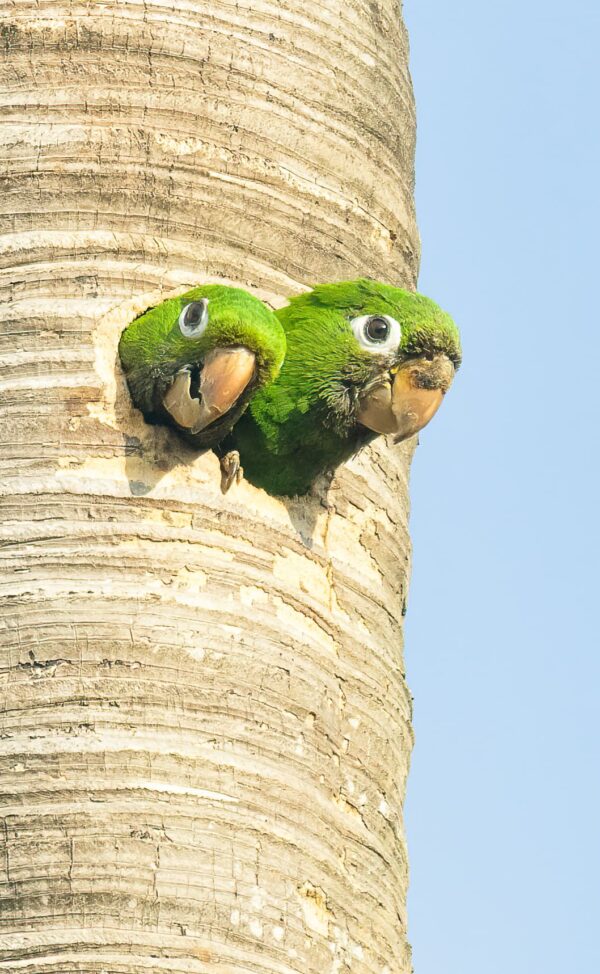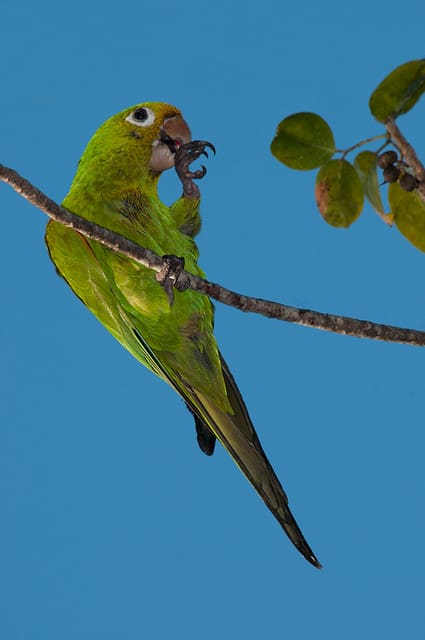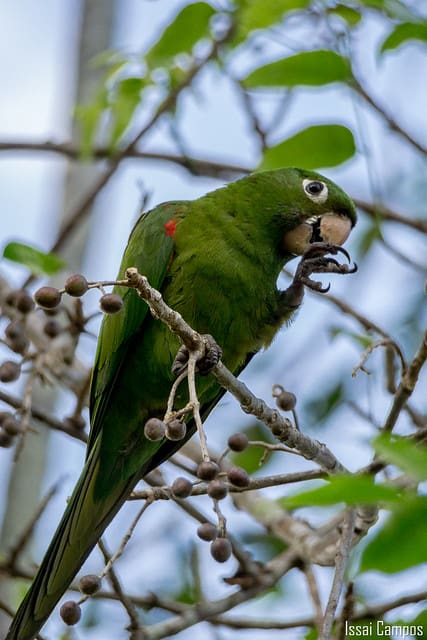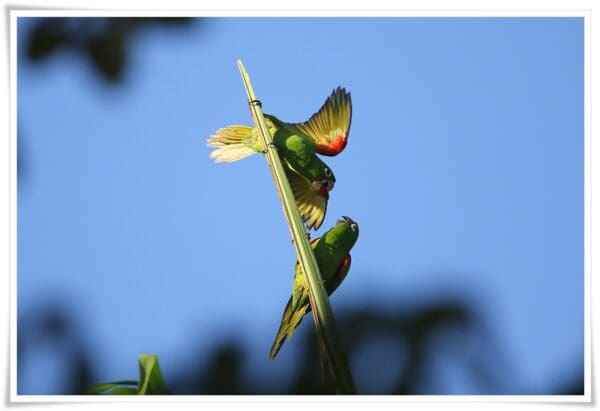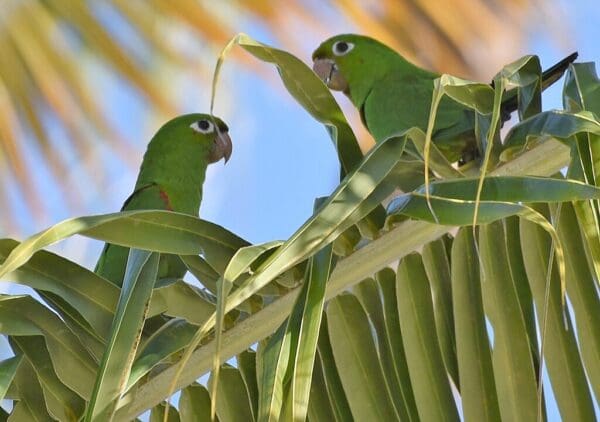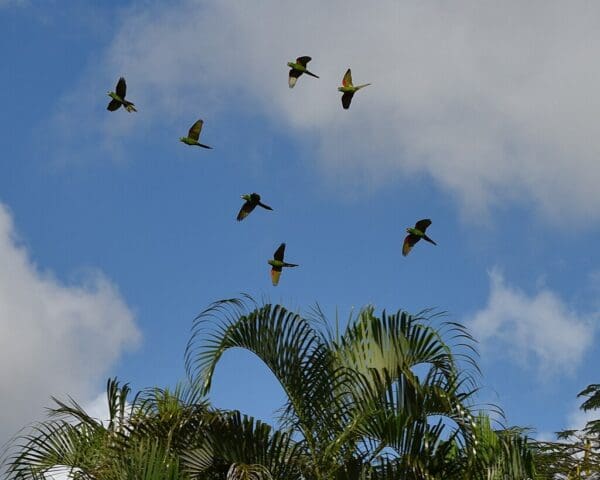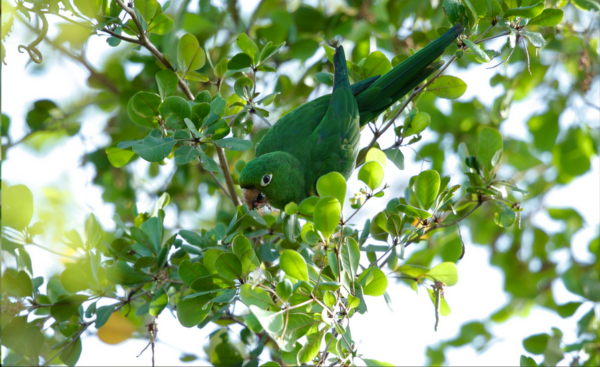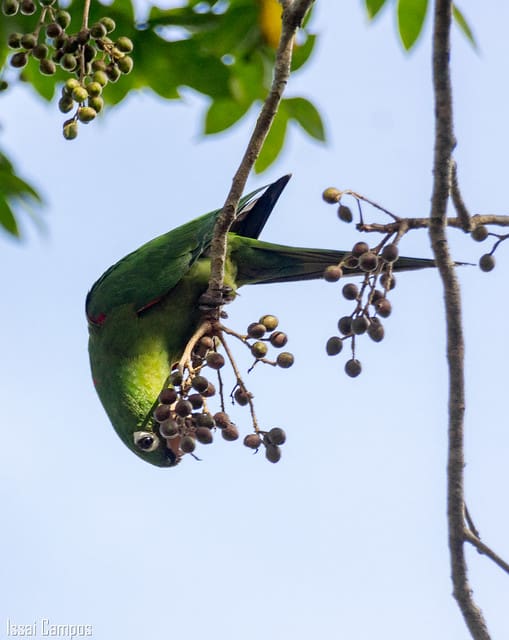Hispaniolan Conure
Also known as:
Hispaniolan Parakeet, San Domingo Conure
Also known as:
Hispaniolan Parakeet, San Domingo Conure

![© Carlos De Soto Molinari [CC BY-SA 2.0] via Flickr A wild Hispaniolan Conure dangles from a twig](https://parrots.org/wp-content/uploads/2023/01/wpt_Hispaniolan-Conure_1313-9-100x100.jpg)
![© Issai Campos [CC BY-SA 2.0] via Flickr A wild Hispaniolan Conure perches on one foot](https://parrots.org/wp-content/uploads/2023/01/wpt_Hispaniolan-Conure_1313-5-100x100.jpg)

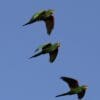
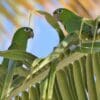
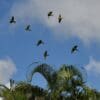
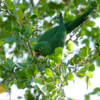
![© Issai Campos [CC BY-SA 2.0] via Flickr A wild Hispaniolan Conure feeds on berries](https://parrots.org/wp-content/uploads/2023/01/wpt_Hispaniolan-Conure_1313-6-100x100.jpg)
DID YOU KNOW?
The Hispaniolan Conure incubates its eggs for a longer period than the other Psittacara species – up to 27 days. Others of this genus incubate their eggs for 22-24 days.

Psittacara

chloropterus
Size:
32 cm (12.5 in)
Weight:
150 g (5.25 oz)
Subspecies including nominate:
two: P.c. chloropterus, P.c. maugei
Colour Adult:
P.c. chloropterus: Both adults mainly green; red bend of wing, carpal edge; red outer median wing coverts and outer underwing coverts; green inner greater underwing coverts with variable red markings; green inner lesser underwing coverts; dull olive/yellow undersides of flight feathers. Beak horn-coloured. Eye ring bare and buff/white. Eye yellow.
P.c. maugei: Both adults as in chloroptera, but with duller green underparts; more red on greater underwing coverts.
Colour Juvenile:
P.c. chloropterus: Red on bend of wing, carpal edge, or outer median wing coverts absent; less red on greater underwing coverts. Grey at base of beak. Eye grey.
Call:
Calls are described as shrill screeched in flight or when perched.
More Information:
Content Sources:
CITES
BirdLife International
Cornell Lab of Ornithology/Birds of the World
Parrots: A Guide to Parrots of the World, Juniper and Parr, 1998
Parrots of the World, Forshaw, 2006. 2010 edition
Lexicon of Parrots, Thomas Arndt.
Parrots in Aviculture, Low, 1992.
Captive Status:
Rare
Longevity:
—
Housing:
Aviary or suspended enclosure, minimum length 2-3 m (7-10 ft).
Diet:
Fruit such as: apple, pear, orange, banana, cactus fruits, papaya, pomegranate, forming about 30 percent of diet; vegetables such as: carrots, celery, green beans and peas in the pod; fresh corn; green leaves such as: Swiss chard, lettuce, dandelion, sowthistle, chickweed, kale; spray millet; small seed mix such as: canary, millet and smaller amounts of oats, buckwheat, safflower and a little hemp; soaked and sprouted sunflower seed; cooked beans and pulses, boiled maize; complete kibble.
Enrichment:
Are avid chewers so provide plenty of bird-safe, unsprayed flowering, fir, pine, elder, willow or saskatoon branches; wooden block toys, vegetable tanned leather chew toys, heat-sterilized pine cones; foraging/puzzle toys, ropes, swings and ladders. Also enjoys bathing so provide overhead water misters or shallow water bowls.
Nest Box Size:
Vertical box 25 cm x 25 cm x 60 cm (10 x 10 x 24 in).
Clutch Size:
2-4
Fledging Age:
55-58 days
Hatch Weight:
—
Peak Weight:
—
Weaning Weight:
—
World Population:
1500-7000 mature individuals. Decreasing at a slow-moderate rate.
IUCN Red List Status:
Vulnerable
CITES Listing:
Appendix II
Threat Summary:
A BirdLife “restricted-range” species, endemic to Hispaniola (Dominican Republic and Haiti). This species is in decline due to habitat loss and persecution as a crop pest. There is some trade in wild-caught birds, but not in significant numbers. Populations may, however, be growing in urban refuges such as Santo Domingo and offsetting declines in the species’ natural habitat; further research is required to quantify these trends.
Range:
P.c. chloropterus: Haiti and Dominican Republic, Hispaniola; introduced to Guadeloupe and Puerto Rico.
P.c. maugei: Formerly Mona Island and possibly Puerto Rico, but last recorded in 1892 and now extinct.
Habitat:
Found up to 3000 m (9840 ft) in arid lowland forest, palm savanna and its preferred habitat, upland forests.
Wild Diet:
Diet includes Ficus fruits and fruits, seeds, or flowers of Clusia, Bursera, Capparis, Coccoloba, Cupania, Spondias, Schefflera, Licaria, and Acacia.
Ecology and Behaviour:
Generally seen in pairs or small flocks and occasionally large groups. Noisy and conspicuous in flight, but usually undetected while feeding quietly in upper stages of canopy. Groups gather at traditional nighttime roosts.
Clutch and Egg Size:
2-4 eggs
Breeding Season:
Nest is in tree hollow or arboreal termitarium. Timing unknown.
Related Links:
—
